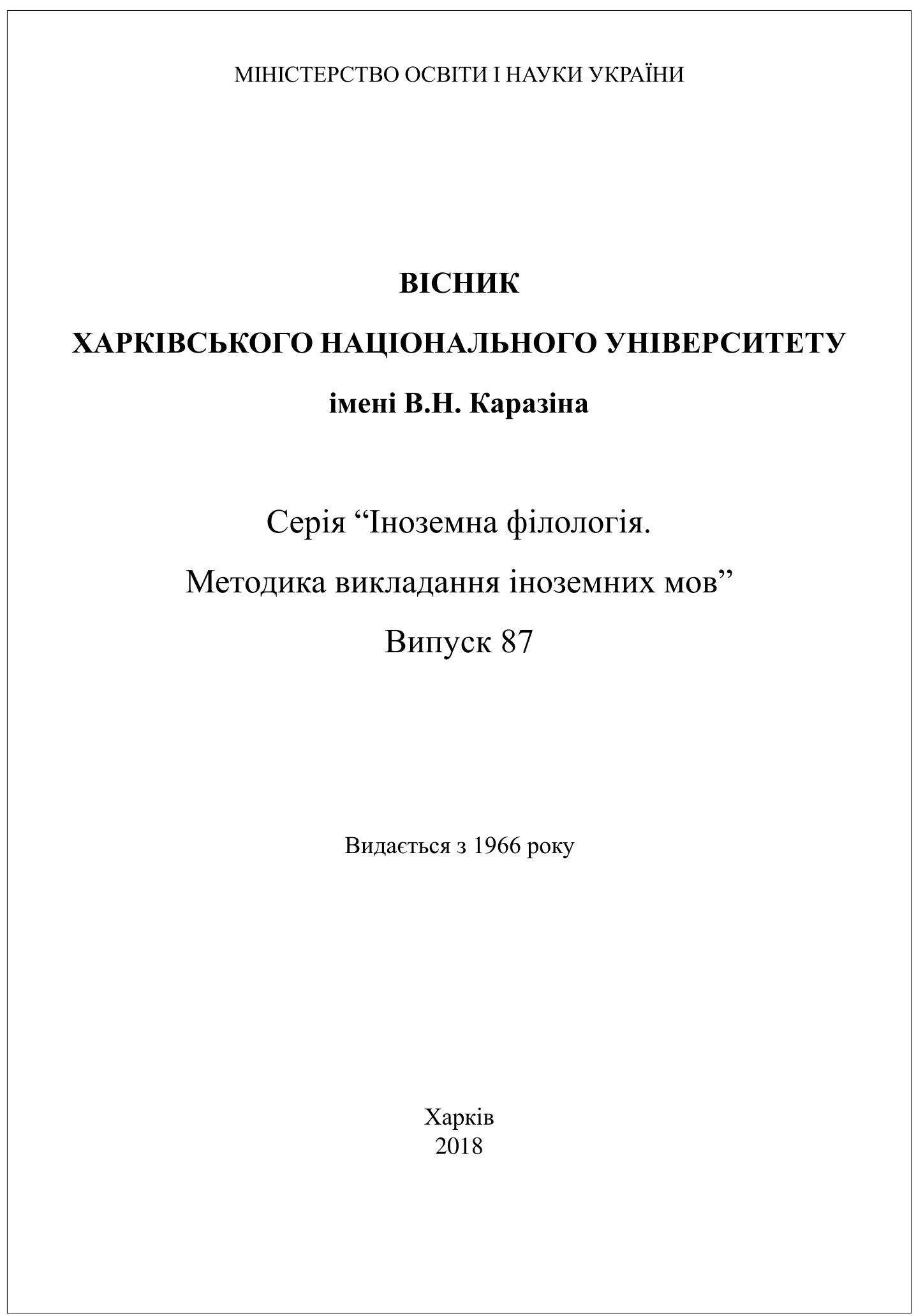Bimodal tweet-texts as a communicative unit of the Internet genre of twitting (exemplified by Donald Trump’s Twitter)
Abstract
The article investigates bimodal tweet-texts as a unit of communication in the Internet genre of twitting, which is generated on the Twitter platform. It provides a definition of a bimodal tweet-text as a communicative unit of the genre of twitting, which is attached to the Twitter platform ready-made, characterized by integrity and cohesion, and which employs semiotic resources of two modes: verbal and pictorial. It also distinguishes the types of bimodal attached tweet-texts which comprise graphic elements with verbal inclusions and photographic elements with verbal inclusions. The graphic elements of bimodal attached tweet-texts are divided into infographics and drawings. Infographics are used to create arguments to prove the Twitter user's point of view in the form of graphs, maps and diagrams representing corresponding facts. Drawings with verbal inclusions are represented by such genres as cartoons, e-cards and also such varieties of Internet memes as advice memes and animated cartoon memes. Furthermore, bimodal attached tweet-texts, which combine photographic elements and verbal elements, include animated or static photographs. Both drawings and photographic images interact with verbal inclusions, creating metaphors, allusions, pun, contrasts that suggest the value of the user's point of view, exerting emotional influence as well as causing a comic effect.
Downloads
References
Dawkins, R. (2006). The Selfish Gene. Oxford: Oxford University Press.
Glossary of multimodal terms. (n.d.). Available at: https://multimodalityglossary.wordpress.com/multimodality.
Goroshko, E.I. (2011). «Chirikajushhij» zhanr 2.0 Twitter ili chto novogo pojavilos' v virtual'nom zhanrovedenii [Twitting Twitter as a genre 2.0 or what is new in digital theory of genres]. Vestnik TvGU. Serija Filologija. – TvGU Messenger. Series: Philology, 1, 11–20 (in Russian).
Jarceva, V.N. (ed.). (1990). Lingvisticheskij jenciklopedicheskij slovar' [Linguistic Encyclopaedia]. Moscow: Sovetskaya Entsyklopediya Publ.
Know Your Meme. (n.d.). Available at: http://knowyourmeme.com
Kress, G. (2010). Multimodality: A Social-Semiotic Approach to Contemporary Communication. London: Routledge.
Martynyuk, A. (2016). The Art of Metaphoric Political Insult within the Cognitive Framework. In: E. Chrzanowska-Kluczewska, and O. Vorobyova (eds.). Language – Literature – the Arts: A Cognitive-Semiotic Interface. Frankfurt am Main; Bern: Peter Lang Edition, pp. 245–261.
Meleshchenko, O.O. (2018). Semiotychna struktura tvit-tekstiv (na materiali Tviteru Donalda Trampa) [Semiotic structure of tweet-texts (exemplified by Donald Trump’s Twitter)]. Science and Education a New Dimension, VI(46), Issue: 159, 48–51 (in Ukrainian). doi: 10.31174/SEND-Ph2018-159VI46-11.
Merriam-Webster online dictionary. (n.d.). Available at: https://www.merriam-webster.com/dictionary
Newsom, D., and Haynes, J. (2011). Public Relations Writing: Form & Style. Boston: Wadsworth Cengage Learning.
Oxford Dictionaries. (n.d.). Available at: https://en.oxforddictionaries.com
Samokhina, V.O. (2012). Zhart u suchasnomu komunikatyvnomu prostori Velykoi Brytanii ta SShA [Joke in the modern comic space of the Great Britain and the USA]. Kharkiv: KhNU imeni V.N. Karazina Publ.
Smiciklas, M. (2012). The Power of Infographics: Using Pictures to Communicate and Connect with Your Audience. Indianapolis: Que.
Ushakov, D.N. (ed.). (n.d.). Tolkovyj slovar' russkogo jazyka [The Explanatory dictionary of the Russian language]. Available at: https://ushakovdictionary.ru/word.php?wordid=22988




